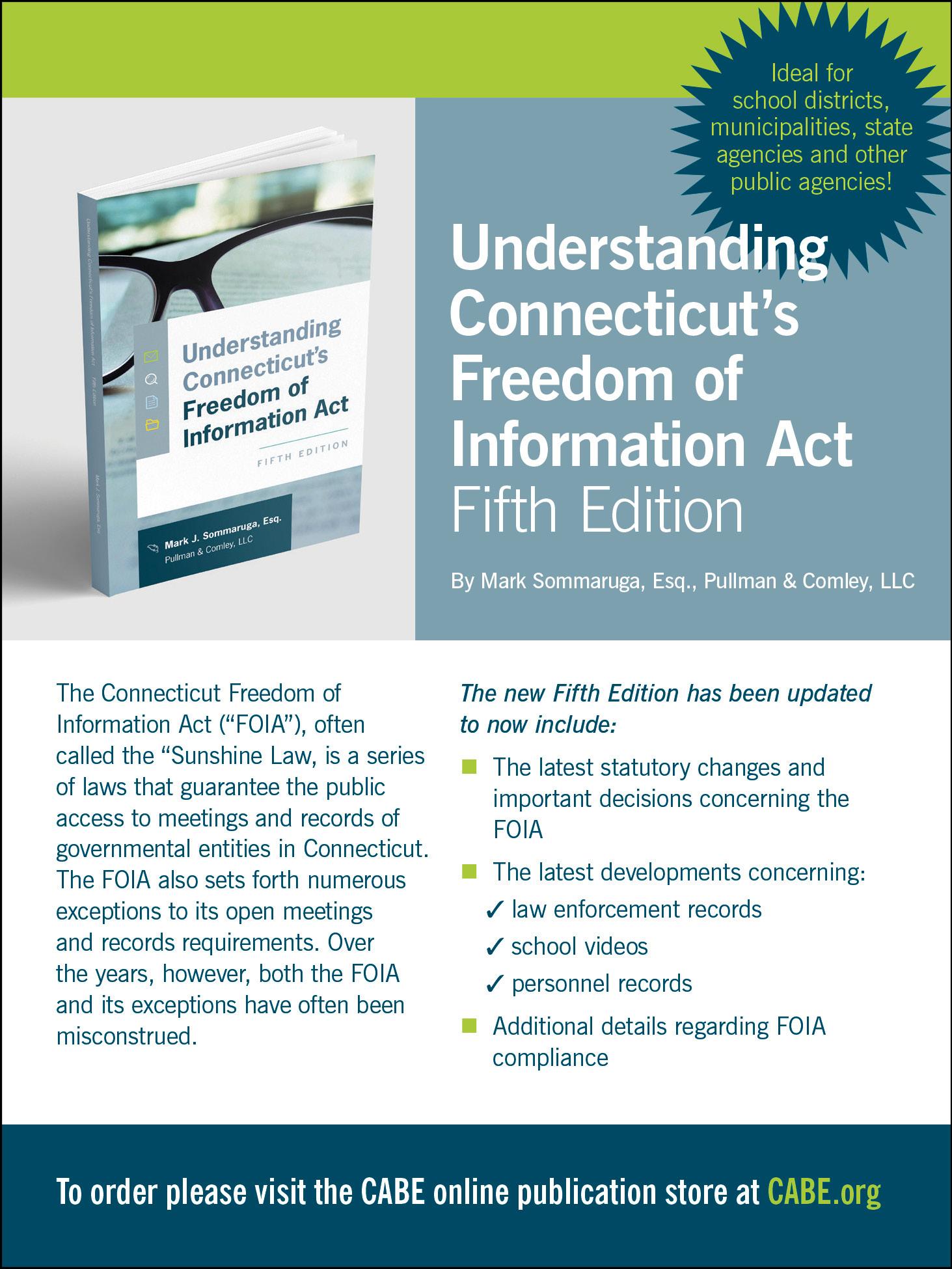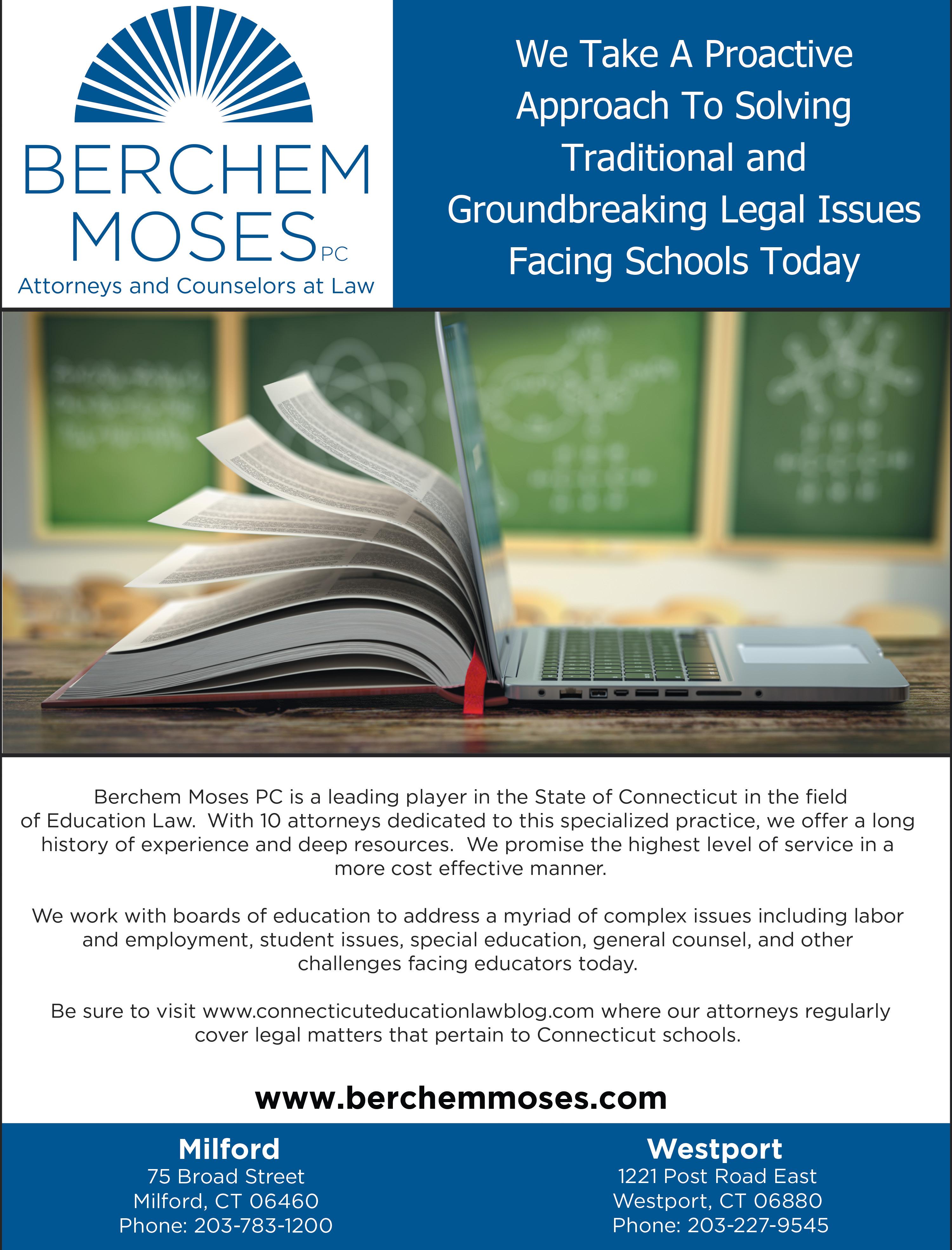
3 minute read
THE POLICY CORNER Boards Have the Opportunity to Create a “Thinking Classroom”
Jody Goeler
Sr. Staff Associate for Policy Service, CABE
Advertisement
One could reasonably ask why CABE’s Senior Policy Associate would find it valuable or even necessary to attend a workshop on Building Thinking Classrooms in Mathematics sponsored by the Connecticut Association of Public School Superintendents (CAPSS) and Partners for Educational Leadership. Was it a simple act of nostalgia or me pining for those days as a public school educator that led me to Peter Liljedahl’s workshop at the Lyceum in Hartford, or was there something else? And perhaps the toughest question – how did I suddenly become the oldest person in the room?
If, as Liljedahl’s research suggests, thinking is a precursor to learning, and if learning is central to the mission of our schools, it should follow that learning about the essential elements of a “thinking classroom” would be something everyone in a district pursues. What kinds of opportunities do such classrooms provide for students? How do teachers make those opportunities accessible to all students? What would a Board’s policy manual include in a district that supports “thinking classrooms”? What would the Board’s homework policy demand? How clear is the Board’s policy ranging from its support of professional development and its commitment to providing access to a wide range of books and other resources to students? What are the Board’s beliefs regarding teacher support and evaluation? Does the Board’s policy support teacher creativity and risk-taking? Do all children have a sense of belonging? Do all children see themselves in the books available to them?
I have to admit, I didn’t become a teacher because of an unbridled passion for school board policy. However, as I continued my journey, I began to understand that my professional life in the classroom, my school, and my district was impacted daily by Board policy. Taking that a step further, I began to understand that the best districts – those districts remaining focused on improving instruction, up- dating curriculum, and supporting the whole child – were those where one could see a clear through line from the Board’s policy work, its decisions as to where to allocate its finite resources and choose and support a superintendent who understands and supports learning. can also discourage the practice of failing students for incomplete or undone homework assignments and instead consider the worthiness of the assignments handed out in the first place. Where many homework policies appear preoccupied with counting hours and focusing on accountability, narrative for the way it conducts its business on behalf of its students and families. Boards aware of its role as policy makers have the opportunity to create a “thinking classroom” through line from the Board’s vision to the student in the classroom. Policy can provide that voice, which helps determine how and who we hire, the curriculum we teach, the instructional practices we deploy, the assessments we give, the skills and dispositions we value in our staff, and the manner in which we develop and evaluate those we place before our students.
The “thinking classroom”, according to Liljedahl’s research, looks different from those we may have known through our own experiences in the classroom. One would see children working in groups of three standing around vertical erasable whiteboards, which allowed for frequent (and much required in my case) correction and revision. Positioning these work stations around the periphery of the classroom provided the teacher the ability to see everyone, observe our progress, and make strategic moves to move our thinking along. As an aside, it is worth noting that at no time did I see a single teacher, coach, principal or superintendent look at a cell phone, which made me wonder whether cell phones are a source of distraction or more a symptom of a lack of interest and engagement in the classroom. Sitting in many meetings and workshops over the years, it would be unprecedented to see no one on a cell phone at any given time.
In post-pandemic 2023, after committing ourselves to build back better, Boards of Education can play a critical role to advance learning by strengthening and aligning its three critical roles: choosing the superintendent, developing policy, and allocating resources. In its policy role, Boards can commit to moving beyond the impulse of shifting away from things unfamiliar by focusing, for example, on ways to block new technologies from students instead of supporting ways of effectively embedding them in instruction. Homework policies a policy aligned with a Board’s vision, articulating its beliefs about thinking and learning, can systemically improve practice across the district.
Policy is the means to an end. In effect, policy provides the district
For me, this was time well spent, even if I did have to come to grips with being the oldest person in the room, and my knees did hurt a bit after all that standing.











